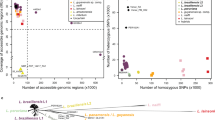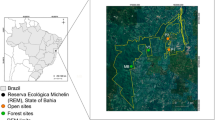Abstract
LEECHES are adapted by their structure and physiology to an ectoparasitic, blood-sucking mode of life. Some have secondarily become predators, but none has obvious adaptations to endoparasitism. Those that enter the upper respiratory tracts of birds and mammals to suck blood from the mucous membrane usually remain only long enough to get their meal. It is therefore interesting to find that at least one species has been found living internally in frogs, usually in the lymph space beneath the skin but sometimes in the coelom. The leech is a species of Philaemon, possibly P. grandidieri Blanchard. The frogs are of six species and were taken in primary montane forest from the central mountains of the Australian Trusteeship Territory of New Guinea. They were at an altitude of 4,600–10,500 ft., between 143° and 146° E. on a latitude of approximately 6° S.
This is a preview of subscription content, access via your institution
Access options
Subscribe to this journal
Receive 51 print issues and online access
$199.00 per year
only $3.90 per issue
Buy this article
- Purchase on SpringerLink
- Instant access to full article PDF
Prices may be subject to local taxes which are calculated during checkout
Similar content being viewed by others
References
Tyler, M. J., Trans. Roy. Soc. South Austral., 86, 105 (1962).
Richardson, L. R., Canad. Field. Nat., 63, 85 (1949).
Autrum, H., in Bronns, H. G., “Klassen und Ordnungen des Tierreichs”, 4, III, 4 (Hirudineen, 1939).
Author information
Authors and Affiliations
Rights and permissions
About this article
Cite this article
MANN, K., TYLER, M. Leeches as Endoparasites of Frogs. Nature 197, 1224–1225 (1963). https://doi.org/10.1038/1971224a0
Issue date:
DOI: https://doi.org/10.1038/1971224a0



